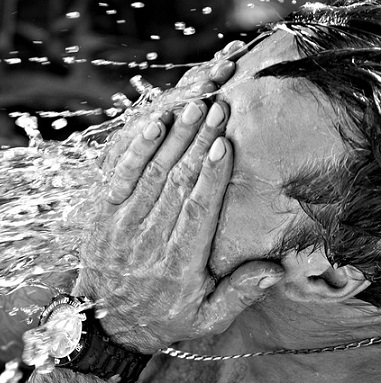Hot enough for you? High heat increases accidents and injuries, while exacerbating numbers of workers’ compensation claims.
By Lonce Lamonte - August 12, 2024Traumatic injuries, such as fractures, contusions, and lacerations are more likely to occur than sprains and strains when workers are feeling excessive heat. These more traumatic injuries are consistent with events like ladder falls.
In a study done earlier in this year, 2024, it was reported that both hot and cold days have more workers’ compensation injuries than milder weather days. The rate of increases and types of injuries vary according to whether extreme temperatures are hot or cold or if precipitation is involved.
A mild weather baseline is considered 60 to 65 degrees Fahrenheit. Then, injuries increase with heat. Impacts begin to show at just a few degrees above the baseline and rise to 5 percent when the temperature is in the low 80s Fahrenheit. Injuries increase by 10 percent for temperatures above 100 degrees Fahrenheit.
Heat impacts the construction industry about twice as much as other sectors. It is shown there are fewer injuries on colder days in construction but the heat impacts are almost twice as large as seen in all workers in construction. This is because construction is a physically demanding realm of work, takes place largely outdoors, and is subject to seasonal fluctuations.
In the hottest cities, one agency found construction injuries can hit a 16 percent increase over the baseline.
It has been on record, thus far, a very hot summer for the continental U.S. and a tremendously hot summer in California. Overall, as shown this year in California, when temperatures climb above 80 degrees Fahrenheit, workers are more likely to file a workers’ compensation claim. Injuries that occur on these hot days are also likely to be more severe.

photo from Pixabay, royalty free
Reports have found that claims were 45 percent more likely on days with a heat classification over 80 degrees. Claims become increasingly frequent on days with an extreme caution classification, with temperatures of 90 to 105 degrees, and on even hotter “danger” classification days above 105 degrees.
The records also reveal that on average injuries occurring on high-heat days were more severe and had more costly payouts than those that occurred on days with no heat advisory.
Some pundits have stated that climate change is the greatest threat to public health. And, naturally, outdoor workers are amongst the most vulnerable.
Scientists expect average temperatures across the county to continue to rise as emissions from burning fossil fuels and other processes trap more heat in the atmosphere. In the Northeast part of the country, the National Weather Service expects higher than average temperatures. National data shows that extreme heat is the deadliest form of extreme weather.
Heat risks don’t only apply to workers who are primarily outside. Data shows that across all industries, workers’ likelihood of filing a workers’ compensation claim rose on heat advisory days.
Employers are encouraged by experts to create climate action plans. Also, pilot programs are beginning to provide incentives for hospitals to reduce their emissions.
Green house gas emissions exacerbate heat. Hospitals are encouraged to reduce their gas emissions, to enhance resilience to climate-related disruptions, like those related to extreme weather.
Lonce Lamonte
Journalist
Editor
lonce@adjustercom.com
lonce@loncelamonte.com
copyright Lonce Lamonte and adjustercom, all rights reserved
| 

